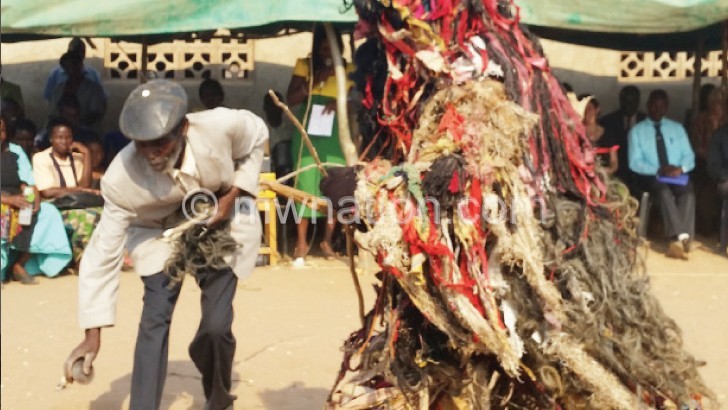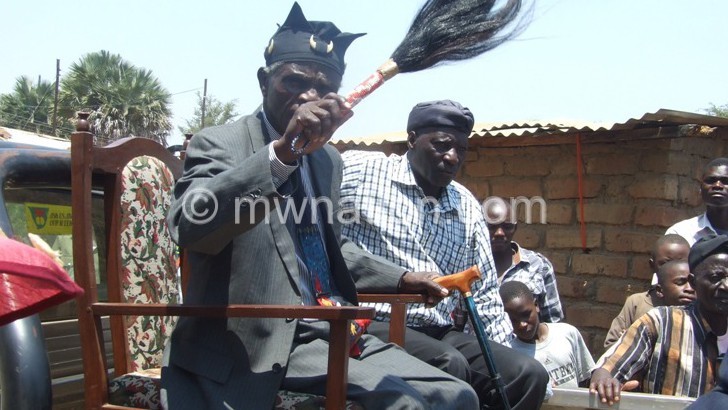Preparing a Chewa girl for marriage
 In the past, for a man and a woman to live together as husband and wife among the Chewa’s, there were formal arrangements done by relatives from both sides that used to take place and some of these traditions remain till today.
In the past, for a man and a woman to live together as husband and wife among the Chewa’s, there were formal arrangements done by relatives from both sides that used to take place and some of these traditions remain till today.
In some instances, the woman never got to meet the man to discuss any future plans as happening these days up until the day of the marriage rites.
But today, courtship and marriage has lost the value it held in the past. Today a man and a woman can start living together even without formal arrangements, worse still, even without their family’s knowledge.
Archibald J Makumbi, in his book Maliro ndi Miyambo ya Achewa highlighted some of the things that used to happen in the Chewa tribe between a spinster and a man seeking for her hand in marriage.
“In the past, a spinster never met her prospective husband face to face. Everything was being sorted out at a court with only men present. When the men agreed at the court, the spinster was told that there is a man interested to marry her,” wrote Makumbi.
He wrote that after the men had agreed at the court, they then discussed the brideprice (Chiongo) and token of appreciation to be taken to the woman’s parents (Chamlomo).
When the girl got married, in order to prevent her from falling pregnant in a short period of time, she was dressed in strings of beads around the waist (Mkuzi) to wait for Mkangali (the last stage of a chief’s initiation ceremony in the Nyau cult) and without further ado, the chief would call for a meeting with elders and plan for an initiation day.
After setting a day aside, elderly women were called and told about the initiation ceremony.
In preparation for the ceremony, a lot of activities including gathering firewood, preparing finger millet (mawere) and making flour were done.
“In the meantime, the woman was taught how to dance Chisamba as well as how she is expected to sleep with her husband, not forgetting other dos and don’ts in marriage,” reads a chapter in the book.
Early in the morning on the initiation day, the woman was taken to the initiation place where counsellors (aNamkungwi) from all the surrounding villages had gathered after being summoned by the counsellor from the girl’s village to coach the girl on cooking, sleeping, dancing as well as other traditions.
The husband-to-be was also put in a house with a counsellor (phungu) where he was advised on the cultures of married people as well as taboos and how he is not supposed to sleep with the wife when she is in her menstrual periods.
He was then called for rituals where he was laid facing the ground and the counsellors carried him and started throwing him around (kuponyerana ngati mpira).
Before the initiation ceremony starts, the chief is supposed to get namatula(payment to the village chief in order to get permission to conduct a wedding) and if this is not given, the woman remains a spinster until another interested man can bail her out, displacing the first interested man.
The initiation ceremony usually lasted for three days; the first day was called Chiuluulu. On this day, the lady was dressed up to the waist, exposing bare breasts and on the head; she was dressed in strings (luzi/mlaza) and the man was dressed in mtemwende (something like a nappy) with a hat of a higher class on the head.
After the three days of the rituals, the man and woman were then free to live as husband and wife in their matrimonial home.





